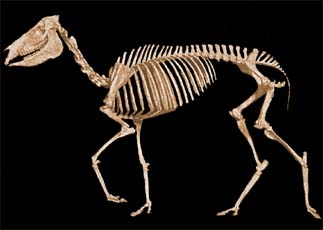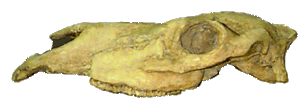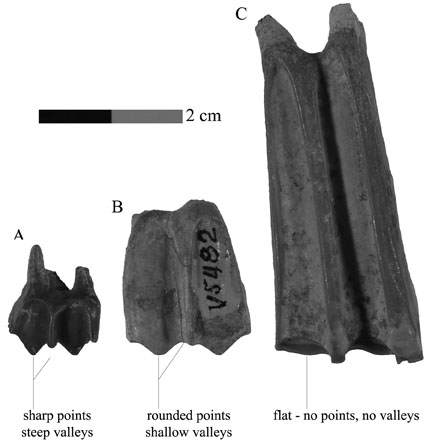Nr
Bild
Quelle und Beschreibung
1

http://www.flmnh.ufl.edu/fhc/firstCM.htm - Florida Museum of Natural History - Fossil Horse Cybermuseum
Skelett von Neohipparion.
2

http://www.flmnh.ufl.edu/fhc/firstCM.htm - Florida Museum of Natural History - Fossil Horse Cybermuseum
Schädel von Neohipparion.
3

http://www.flmnh.ufl.edu/ponyexpress/pony13_2/Pe132.html
Mesowear analysis compares the degree of wear on the occlusal surface of moderately worn molars. Archaeohippus blackbergi (A) shows the sharp points and steep valleys on the lingual side of a browser molar, Merychippus gunteri (B) shows the more rounded points and gentler valleys of a mixed feeder molar and Neohipparion (C) shows the almost flat-worn surface of a grazer molar. Erika Simons photo